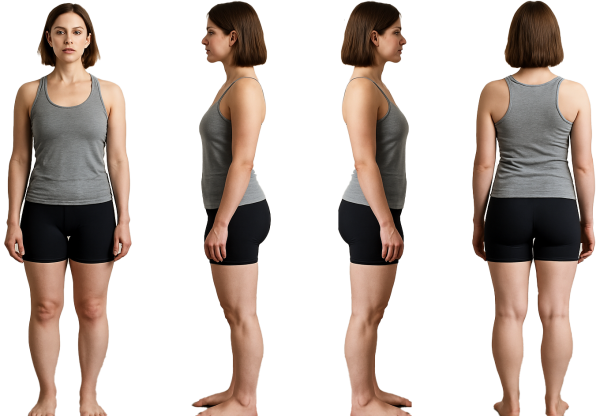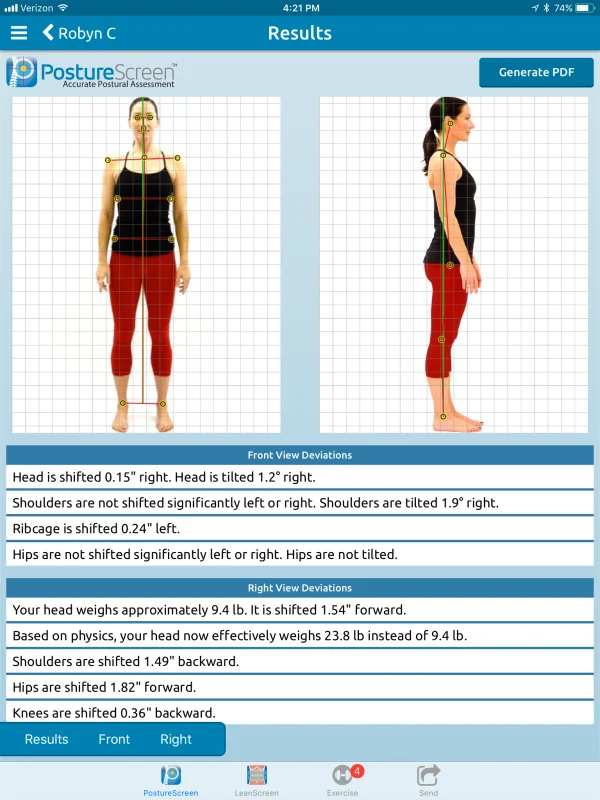✔ Improve Alignment | ✔ Reduce Discomfort | ✔ Track Your Progress
We take four photos of you – front, back, and each side while you stand in a relaxed, natural posture. These images capture your full-body alignment from all angles.

Your images are uploaded into advanced posture analysis software, which uses biomechanical calculations and alignment markers to assess your posture in detail.
The software generates a comprehensive visual report, highlighting imbalances such as:
Forward head carriage
Rounded shoulders
Anterior pelvic tilt
Pelvic misalignments
The report includes measurable data to help track progress over time.

Your chiropractor will walk you through the results, explain how your posture may be affecting your health, and provide tailored treatment and advice to help correct the underlying issues.
Proper posture ensures that the spine remains in its natural alignment, reducing strain on the muscles, ligaments, and joints. Misalignment can lead to subluxations, where the vertebrae are slightly out of place.
Good posture helps prevent compression or irritation of the spinal nerves. Poor posture, especially slouching or leaning forward, can cause the spine to curve unnaturally, potentially leading to nerve impingement. This can result in pain, numbness, tingling, muscle weakness and pins and needles.
Consistently poor posture can cause abnormal wear and tear on spinal discs and joints, leading to early degeneration, such as arthritis or disc herniation. Chiropractors emphasize maintaining proper posture to reduce these long-term degenerative effects.
Good posture ensures that the body’s weight is distributed evenly across the spine and muscles, which reduces strain on individual structures. Poor posture often leads to overcompensation by certain muscles or joints, leading to imbalance, pain, and dysfunction.
Chiropractors believe that many types of back, neck, and joint pain can be traced back to poor posture. Proper posture helps prevent muscle imbalances, tension, and fatigue, which are common causes of musculoskeletal pain.
Posture affects more than just the spine; it impacts overall body function. Proper alignment supports better breathing, digestion, and circulation. Chiropractors often emphasize posture as part of maintaining overall health and wellness.
In summary, posture is fundamental to maintaining spinal health and ensuring that the body functions optimally. Chiropractors focus on posture to prevent injury, reduce pain, and enhance overall well-being.